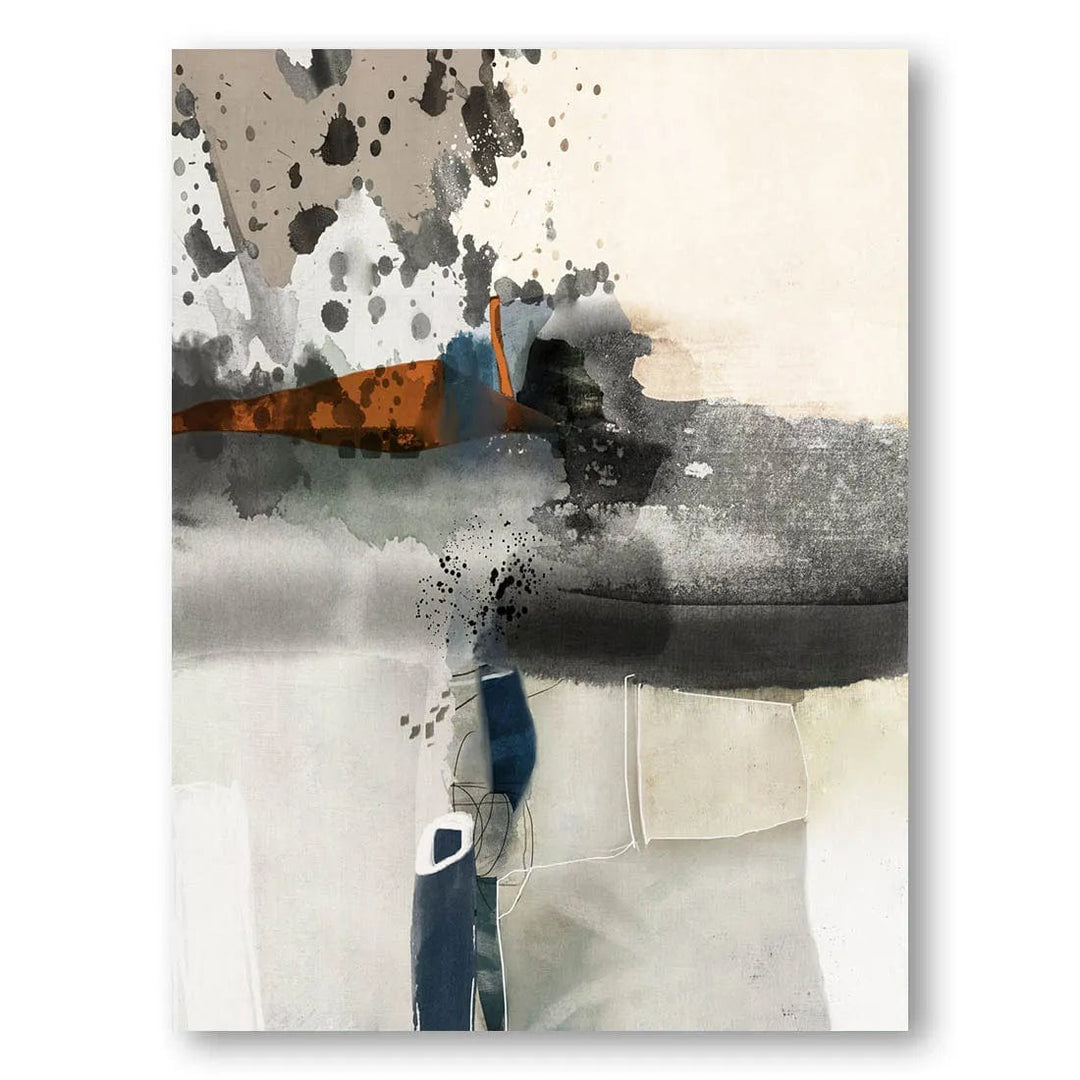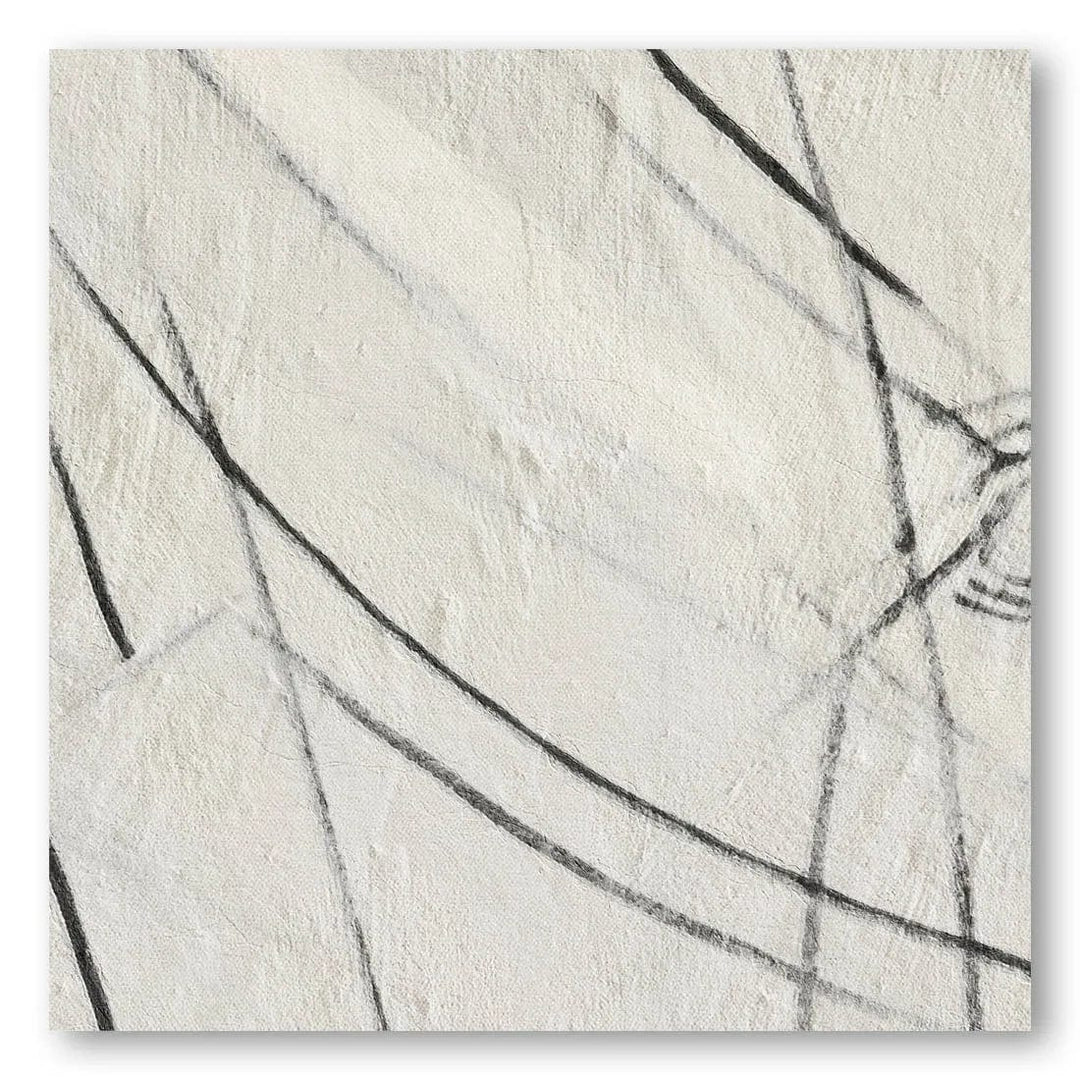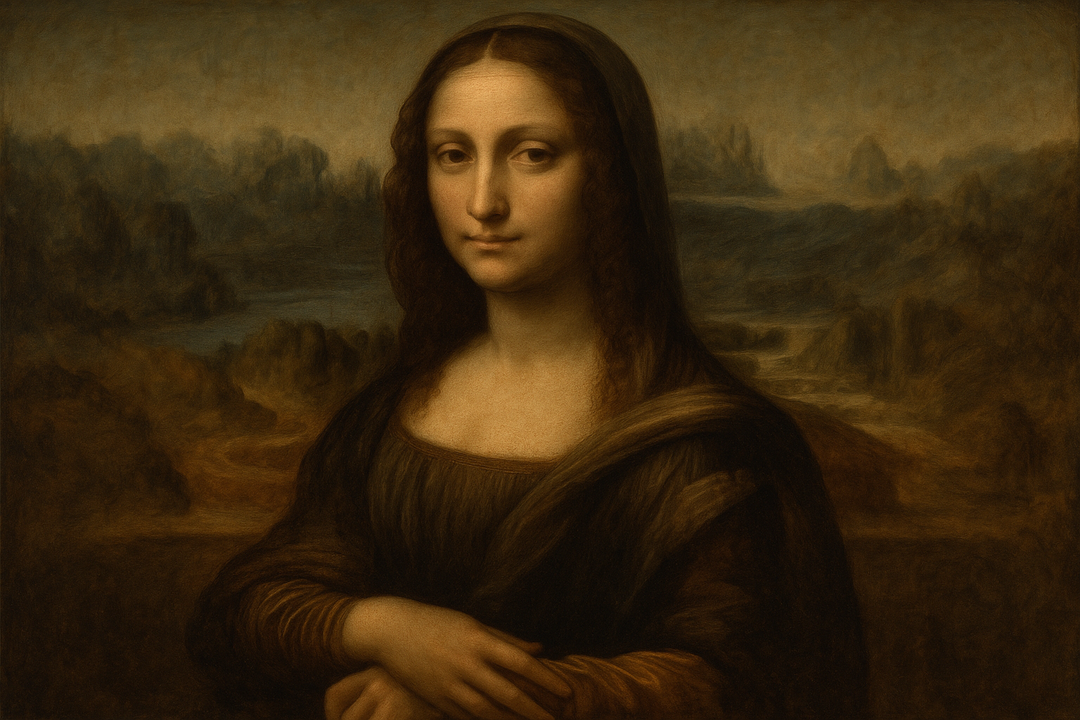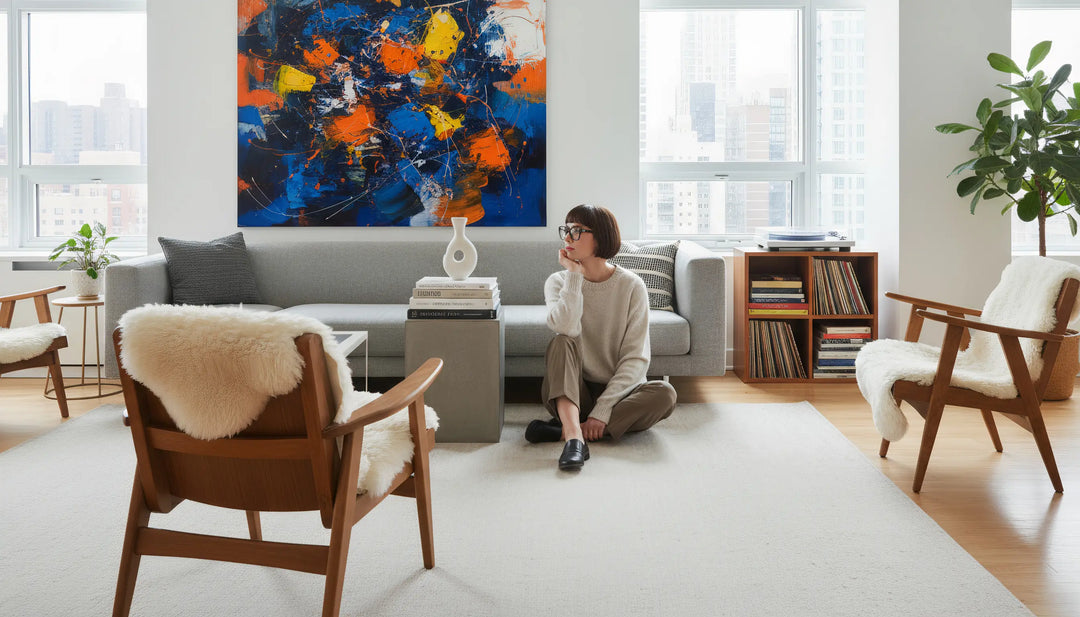Disclosure: This article contains links to Stone & Gray's curated collection of Abstract Expressionism-inspired art prints. As specialists in bringing museum-quality art to South African homes, we're committed to providing expert guidance alongside our carefully selected products.
Picture this: It's 1950, and in a converted barn on Long Island, an artist is dancing around a massive canvas spread on the floor, rhythmically dripping and splattering paint in sweeping arcs. This isn't vandalism—it's Jackson Pollock creating some of the most revolutionary art the world has ever seen. Welcome to Abstract Expressionism, the movement that didn't just change art—it changed everything we thought we knew about creativity, emotion, and what it means to be an artist.

The raw energy and emotional intensity of Abstract Expressionist creation in a 1940s New York studio
Understanding Abstract Expressionism: Beyond the Paint Splatters
Abstract Expressionism emerged in the 1940s as America's first truly influential international art movement, fundamentally changing how artists approached their craft. But calling it simply "paint splatters" misses the profound philosophical and emotional depths that made this movement so revolutionary.
At its core, Abstract Expressionism was about liberation—liberation from the need to represent recognizable objects, from European artistic traditions, and from the idea that art should be "pretty" or decorative. As the Tate defines it, the movement emphasized "gestural brush-strokes or mark-making, and the impression of spontaneity" while prioritizing the artist's inner emotional landscape over external reality.
The Historical Context That Made It Possible
Abstract Expressionism didn't emerge in a vacuum. The movement developed against the backdrop of World War II, the Great Depression, and massive social upheaval. Artists were searching for new ways to express the complexity of modern life, the trauma of war, and the promise of American optimism.
Key Historical Factors
- European Refugee Artists: Many European modernist masters fled to New York during WWII, bringing avant-garde ideas
- Government Support: The Works Progress Administration (WPA) provided employment for artists during the Depression
- New Museum Culture: MoMA opened in 1929, exposing American artists to cutting-edge European art
- American Confidence: Post-war economic boom created cultural confidence to challenge European dominance
The Two Faces of Abstract Expressionism: Action Painting vs. Color Field
Art critic Clement Greenberg identified two distinct approaches within Abstract Expressionism that represented fundamentally different ways of understanding what art could do and how it should affect viewers.

The masters of Abstract Expressionism: each developing their own revolutionary approach to emotional expression
Action Painting: The Art of Doing
Action painters viewed their art as "a direct expression of their innermost emotions and subconscious thoughts", believing that the physical act of painting was as important as the finished work. Jackson Pollock famously declared, "The painting has a life of its own. I try to let it come through."
Action Painting Characteristics
- Spontaneous Creation: No preliminary sketches or planned compositions
- Physical Engagement: Artists used their entire body in the painting process
- Visible Brushstrokes: Each gesture and mark tells part of the story
- Emotional Immediacy: Direct transfer of feeling from artist to canvas
- Large Scale: Often massive canvases that immerse the viewer
Color Field Painting: The Art of Being
While action painters emphasized the doing, color field painters focused on creating "large fields of flat, solid color spread across or stained into the canvas" to evoke contemplative, almost spiritual responses from viewers.
Mark Rothko, perhaps the most famous color field painter, believed his large-scale color paintings could induce profound emotional and spiritual experiences. Standing before a Rothko painting in person—something no reproduction can adequately convey—viewers often report feeling transported or moved to tears by the sheer power of color and scale.
Timeline: The Evolution of Abstract Expressionism

The revolutionary spirit of 1940s New York: artists gathering to discuss radical new approaches to art-making
Key Periods in Abstract Expressionism
1930s-1940: The Foundation
Artists experiment with Surrealist automatism and European modernist techniques. WPA programs support artist development.
1943-1950: The Breakthrough
The first generation of Abstract Expressionism flourishes. Pollock develops drip painting. Rothko begins his color field explorations.
1946: The Naming
Critic Robert Coates coins the term "Abstract Expressionism" in The New Yorker to describe Hans Hofmann's richly colored canvases.
1950s: International Recognition
Movement gains global attention. New York displaces Paris as the art world's center. Second generation artists emerge.
1960s: Evolution and Legacy
Movement influences Pop Art, Minimalism, and subsequent art movements. Museums begin major collection efforts.
Master Artists and Landmark Works

The profound impact of Abstract Expressionist works: viewers experiencing the scale and emotion in a gallery setting
The Pioneers of Abstract Expressionism
Jackson Pollock (1912-1956): The Revolutionary
Pollock's drip paintings, created by laying canvas on the floor and moving around it in a kind of dance, challenged every preconception about how paintings should be made. His masterwork "Autumn Rhythm (Number 30)" (1950) at the Metropolitan Museum demonstrates how controlled chaos can create profound visual harmony.
Pollock's Innovation: "When I am in my painting, I'm not aware of what I'm doing. It is only after a sort of 'get acquainted' period that I see what I have been about." This process-focused approach influenced not just art but fields from jazz to therapy.
Mark Rothko (1903-1970): The Spiritualist
Rothko's color field paintings invite contemplation and transcendence. His late works, particularly the Rothko Chapel paintings in Houston, demonstrate how pure color and form can create spaces for meditation and spiritual reflection. Rothko believed that "while flat, two-dimensional forms destroyed illusion, they also revealed truth."
Willem de Kooning (1904-1997): The Figurative Abstractionist
De Kooning bridged figuration and abstraction, particularly in his famous "Woman" series. His aggressive, gestural brushwork and bold color choices influenced generations of painters and demonstrated that abstraction didn't require complete abandonment of the human form.
Bringing Abstract Expressionism Into Your South African Home
Abstract Expressionism isn't just museum art—it's perfect for contemporary South African homes that want to make bold, meaningful statements. Here's how to incorporate this powerful movement into your living space.
Room-by-Room Guide for South African Homes
Expert Styling Tips for South African Homes
Working with South African Light
- Brilliant Sun: Our intense light enhances the vibrancy of Action Painting colors—perfect for north-facing walls
- Soft Mornings: East-facing walls benefit from gentle Color Field pieces that glow in dawn light
- Golden Hour: West-facing spaces are ideal for warm-toned Abstract Expressionist works
- UV Protection: Use UV-protective glass in sunny rooms to preserve artwork longevity
Curated Abstract Expressionism Collection
Explore our carefully selected prints that capture the spirit of Abstract Expressionism while working beautifully in contemporary South African interiors:
How Abstract Expressionism Compares to Other Art Movements
The Psychology and Emotional Impact

The heart of Abstract Expressionism: transforming raw human emotion into visual language
Abstract Expressionism works because it speaks directly to our emotional centers, bypassing the rational mind that usually tries to "decode" representational art. Research in neuroscience suggests that abstract art activates different brain regions than representational art, engaging areas associated with emotion, memory, and personal meaning-making.
Why It Works in Modern Homes
- Emotional Resonance: Connects with viewers on a visceral level, creating personal meaning
- Conversation Starter: Abstract works invite discussion and interpretation
- Timeless Appeal: Non-representational art doesn't date like figurative work
- Color Psychology: Strategic use of color can influence mood and energy in spaces
- Scale Impact: Large works create immersive experiences that transform rooms
Frequently Asked Questions
What makes Abstract Expressionism different from other abstract art?
Abstract Expressionism is specifically about emotional expression and the physical act of painting. Unlike geometric abstraction or decorative abstract art, it prioritizes the artist's inner emotional landscape and often reveals the process of creation through visible brushstrokes, drips, or other marks.
How do I choose between Action Painting and Color Field styles for my home?
Consider your space's function and your personal response. Action Painting works well in social areas where you want energy and conversation, while Color Field pieces are ideal for quiet spaces where you want to encourage reflection and calm. Also consider the existing energy of your room—a busy family area might benefit from the grounding presence of a Color Field piece.
What size Abstract Expressionist print should I choose for my South African home?
Abstract Expressionism works best at larger scales—typically 80cm or larger for the smallest dimension. For living rooms with high ceilings common in South African homes, consider 120×150cm or larger. The artwork should feel substantial enough to anchor the space without overwhelming it.
How should I frame Abstract Expressionist prints?
Simple, minimal framing works best to avoid competing with the artwork's energy. Consider floating frames or gallery-style framing with wide white mats. For Action Painting styles, frameless mounting can enhance the sense of the work extending beyond boundaries.
Can Abstract Expressionist art work in traditional South African home styles?
Absolutely! Abstract Expressionism can create exciting contrasts in traditional settings. In Cape Dutch or colonial-style homes, a bold abstract piece can serve as a bridge between historical architecture and contemporary living. The key is choosing works whose color palettes complement rather than clash with traditional elements.
Our Commitment to Quality and Authenticity
About Stone & Gray's Curation Process
Our Abstract Expressionism collection reflects years of study and appreciation for this revolutionary movement. Each print is selected based on its ability to capture the emotional intensity and technical innovation that defined the original movement, while working beautifully in contemporary South African interiors.
- Museum-Quality Printing: Archival inks and papers ensure longevity
- Expert Color Matching: Colors calibrated to reflect the intensity of original works
- South African Tested: All selections proven to work in our unique light conditions
- Satisfaction Guarantee: 30-day returns if the artwork doesn't transform your space as expected
Contact Our Art Consultants
Need help choosing the perfect Abstract Expressionist piece for your space? Our art consultants understand both the movement's significance and South African interior design needs.
Email: info@stoneandgray.co.za | Phone: +27 21 XXX XXXX
The Lasting Impact of Abstract Expressionism
Abstract Expressionism didn't just change art—it changed how we think about creativity, emotion, and the role of the artist in society. The movement's emphasis on personal expression, its rejection of academic rules, and its celebration of the creative process influenced everything from jazz music to therapy techniques.
Today, as we navigate an increasingly complex world, the emotional honesty and transformative power of Abstract Expressionism feel more relevant than ever. In your South African home, these works can serve as daily reminders of the power of authentic expression and the transformative potential of bold creative choices.
Ready to Experience Abstract Expressionism?
Transform your space with the revolutionary power of Abstract Expressionism. From the dynamic energy of Action Painting to the contemplative depth of Color Field works, discover how this groundbreaking movement can enhance your home's emotional landscape.
Explore Our Abstract Expressionism Collection✓ Museum-Quality Printing | ✓ Expert Curation | ✓ South African Delivery | ✓ 30-Day Returns
References: Museum of Modern Art, The Metropolitan Museum of Art, Tate Modern, Britannica
Last Updated: September 8, 2025 | Author: Stone & Gray Art Curation Team

















